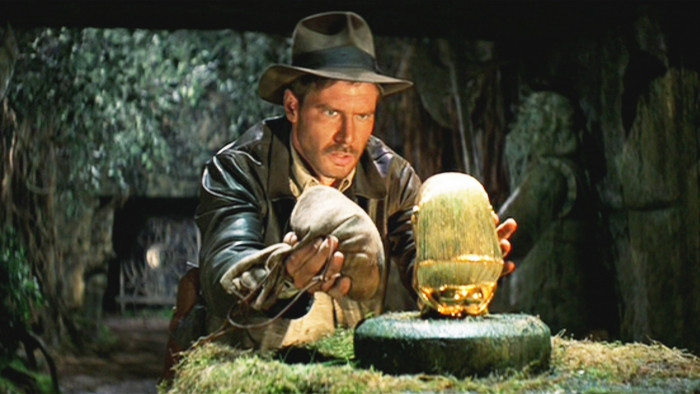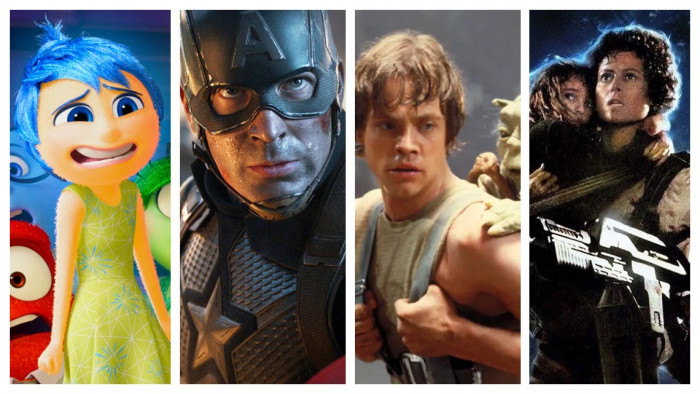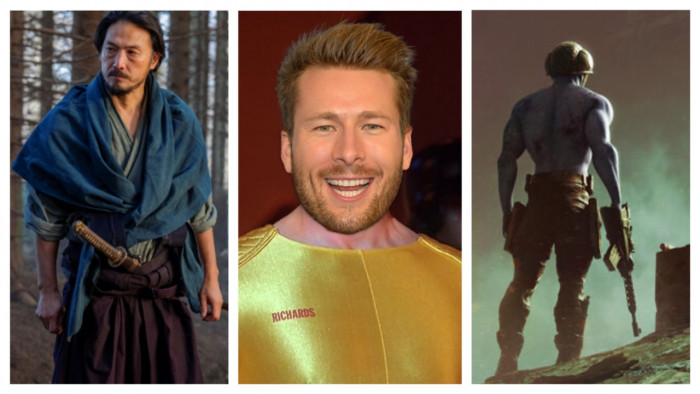Quick primer: horror has been, and always will be, my favourite genre of movie, followed closely by action, then 1998 sexual thriller Wild Things, then comedy. But it’s horror that takes up most of my time - I even attend a five-day horror film festival every year. I go on my own to this, by the way, as surprisingly, not a single one of my friends wants to sit indoors for almost a week, watching over 30 movies in a row on what is often the hottest, most-fun weekend of the year - movies which are, remember, supposed to scare and alarm you. This is the height of frigidity, if you ask me.
But it’s not just me that harbours such an affinity for the genre - horror, as it happens, is very popular with everybody else, too; for example, scary but not-actually-that-scary clown movie Itbecame the highest grossing horror film in history last year, passing a quite ridiculous $300 million dollars at the US box office. Yep, horror’s doing big ole business at the moment.
So, why not capitalise on this gestating boom by jumping on the rotting bandwagon and making your own damn horror movie? Rake in some of that sweet, sweet cashish? It doesn’t even need to be good, to be honest - it just has to have a good trailer, basically. It’s all very easy.
Luckily, and in no small part thanks to my extensive knowledge in the area, I thought I’d help you out. As such, here are my top ten tips for making a successful horror movie in 2018. You can thank me later.
(Disclaimer: ‘successful’ has no bearing on quality)
1. Make a sequel/prequel

Alien: Covenant (New Line Cinema)
Examples: Alien: Covenant, Annabelle: Creation, The Conjuring 2
Relatively recently, making a sequel to a horror movie meant consigning yourself to the fact that your movie was going straight to DVD, destined to languish in the bargain bin, touching bums with yet another American Pie spin-off, but that’s all changed nowadays. Sure, there’s still a comparatively lucrative STV sequel market, but if you want the big bucks - then we’re back on theatrical terms again.
Out of 2017’s top ten highest grossing horrors, four were part of a franchise (same with 2016); with at least one (Rings) getting absolutely shafted by critics. Doesn’t sodding matter about the quality though, because people are like dogs, and if they recognise something they once liked, they will go ape-shit for it. So stick an established name on your flick and it’s walkies. Easy.
2. Make a remake

Poltergeist (MGM)
Examples: It, Poltergeist, Death Note
Much like making a sequel, this is a bit of a no-brainer, too. Pick a recognisable name - doesn’t matter if people haven’t seen the original (Mother’s Day, for example), because most of them will just assume they have. The more controversial the original, the better, too - certain names hold a terrifying place in popular culture, regardless of the public’s knowledge of the product. People will want to see another Texas Chainsaw sequel even if they haven’t seen the first one - the controversial name carries enough weight to drum up interest.
Of course, 2017’s unbelievable success story, It, was a film that scared people when they were kids (very easy to do by the way - because the original doesn’t hold up) and so that shared fear is present before the remake even comes out. Expect to see way more horror remakes in the coming years (mooted re-dos include An American Werewolf In London, The Blob, Puppet Master). Original ideas? Who needs them? Put all of them in the bin immediately.
3. Set it in a retro time period

It (Rex)
Examples: It, The Conjuring 1&2, Annabelle & Annabelle: Creation
Now, I can’t quite say if the popularity of The Conjuring and Annabelle films were down to when they were set, but I’m 99% sure that It’s retro setting had a lot to do with its success. Really, it’s all because of Stranger Things, isn’t it? After that, horror larks set in the ‘80s are big business.
Why the ‘80s? Well, it’s a time period just recent enough that people can pretend they remember it, and the fashion and music are now cool again. It even went one step further and ripped one of the kids straight out of the show. It was essentially Stranger Clowns.
It’s interesting to note though, that for years low-budget filmmakers have been making ‘love letters’ to ‘80s horror, because as any horror fan worth their guts knows - that’s when all the best horror was made. Only now does it appear to be seeping into the mainstream, but I’m fine as hell with it.
4. Have a scary kid in it

Ouija: Origin Of Evil (Universal)
Examples: It, The Conjuring 2, Ouija: Origin Of Evil
I hate this trope with a passion that would destroy a thousand crèches, and it’s unfortunately as strong as it’s ever been nowadays. A dumb kid with a load of flour on its cheeks, standing at the end of a corridor saying something cliché and inane like “Come play with me” - there’s your big scare scene!
Of course, no, it isn’t, because children can’t act and so everything automatically becomes eye-rollingly contrived. There are only a few successfully scary horror movies about creepy children, and they’ve already been made, and done it best (The Omen, The Children etc), so this trite device can up and do one.
Of course, that’s not to say YOU shouldn’t go that route. People hate scary kids for some reason, so that’s where the big bucks are, and that’s what this article is about. Chuck a fucking floppy-haired brat in your screeching bag of hokum, see if I care.
5. Have a non-scary kid in it

Lights out (Warner Bros)
Examples: It (obviously, again, copy this film forever), Annabelle: Creation, The Darkness
This is similar to the previous point, but it’s not exactly the same. In this case, it is wise to chuck some kids in who don’t have black eye-shadow on, because they will also lead you on a trip down Box-Office Avenue.
This is because most people remember being a kid, and most people remember being scared of something when they were a kid (in my case, the airing cupboard or my haunted Gladiators poster), so putting a small child in immediate peril is a wonderfully effective scare tactic.
“Oh, I remember being a terrified youngster” the audience says, “Therefore I am now a terrified oldster.” It’s a fail-safe. Put those little shits in peril!
6. Make it really violent

Raw (Rex)
Examples: The Belko Experiment, Raw, It
Back in the ‘80s, horror movies would jostle amongst each other, climbing over one another’s severed heads to grab the title of ‘goriest movie’ - it was a race to spill the most blood, chop off the most limbs, spray the most guts. But until very recently, that was no longer the aim (at least when it came to studio horror, anyway) - it was instead a race to get the biggest audience and make the most money. That meant keeping things tame.
Off screen deaths, diet-scares and safe subject matter, essentially, but recent events have nudged everyone from their PG-rated slumber and proved that adult movies can do the big guns too (thanks Deadpool) - horror’s getting gruesome again.
For example, the opening scene of It is genuinely shocking, and vile French break-out Raw had a legion of punters leaning their washed-out faces into spew-bags. To boil it down: if you make your movie shocking enough to get a rep, people will take notice. Go on, pull some intestines out of an arsehole, try something new.
7. Put a fucking doll in it

The Boy (Rex)
Examples: Annabelle, Annabelle: Creation, The Boy, erm, Goosebumps
Dolls have always been a good bet, but of late, they’ve been making somewhat of a resurgence, mainly thanks to The Conjuring and its little doll-based prologue. Potentially the scariest part of the film - it’s spawned two spin-offs so far, as well as a quite-good-actually imitator in The Boy. All four did huge business at the box office, as it happens, and we’ve got another Chucky movie just around the corner, which will be sure to do alright on DVD and streaming. It’s a doll’s life, whatever that means.
Essentially, dolls are creepy and I’m 98% sure that everyone is scared of them, so just unplug your finger and bloody well do a fucking doll movie you hack.
8. Put a fucking shark in it

47 Metres Down (Dimension Films)
Examples: The Shallows, 47 Metres Down, Meg (upcoming)
Dolls are good, but sharks are better. Not only do they conquer the low-budget, STV market (Sharknado and family), they’re also banging a bollock-full of buck up on the proverbial big screen. Ever since Jaws, sharks have been a mainstay in horror cinema, and you’ve never met a person - I guarantee it - that isn’t in some way interested in sharks. Sharks are the dinosaurs of the alive-animals contingent - evergreen filmic content.
And there’s no chance of shark-interest dissipating any time soon - The Shallows and 47 Metres Down were both unexpected successes (not sure why anyone was surprised - they were about sharks), and Jason Statham - of big time box office fame - is headlining his own giant shark movie, Meg, to be released later this year. I certainly know that I’ll be popping a pair of knickers on and seeing that bastard.
Conclusion: do not stop making shark movies, ever.
9. Do a Stephen King book, any one

Gerald’s Game (Netflix)
Examples: It, Gerald’s Game, 1922 (upcoming)
Duck soup, this - Stephen King is the horror author with the most film adaptations to his name, and there’s a reason for it: they’re all pretty much guaranteed to be a draw. 2017 alone produced four King flicks and two television series, with more just around the corner. He’s got loads of books left, too, so just bang out a quick adaptation of one of them (actually, doesn’t even matter if it’s been done before - hello Carrie, hello It) - people will go and see it based on King’s name alone. Stephen King on the poster = “Oh, that must be good then.”
Of course, that is not true, as he’s had a fair few duff adaptations (Cell, The Dark Tower) but it’s very easy to get good off a King classic (It, The Shining, Pet Sematary), and the recent success of the everyone’s favourite murder-clown will only push studios to snap up the rights to more of his work. I am resolutely ‘interested’ - I’ve seen nearly every King adaptation and I will continue this arbitrary quest until I die.
10. If all else fails, just do found-footage

Blair Witch (Lionsgate)
Examples: Blair Witch, Unfriended, Paranormal Activity: The Ghost Dimension
OK, so found-footage has fallen out of favour recently (thank hell), and none of the top ten highest horror grossers of 2017 could be counted as such, but there’s an important reason why you should still make one. We’re talking cynically here, of course, let’s get that straight - you should make a found-footage movie because they are extremely cheap to do, extra-eeemly cheep.
There’s a reason why The Blair Witch Project and Paranormal Activity got such an esteemed entry into the profit record books; it’s because they took over the world on teeny tiny mousey budgets. The former costed a paltry $60,000, the latter an even stupider $15,000 - both then pumped the box office a new butthole to the poopy tune of 248.6 million and $193.4 million respectively. That’s absolutely STUPID.
Even the latest Blair Witch sequel, which was considered a box office disappointment, grossed $45.2 million on a $5 million budget - less impressive, sure, but still stupid.
God it’s easy to make a found-footage film - get some mates, grab a cheapo camera and run around the woods screaming for a weekend - box office gold. Bit of snot hanging out your nose to round it all out and you’re onto a juggernaut, my dudes.
11. (Bonus) Just be Jordan Peele

Get Out (Blumhouse)
Example: Get Out
This is very important: if you’re Jordan Peele you’ll just make your first horror film and it’ll be one of those most successful films of the whole year, horror or not. Just be Jordan Peele. Easy.
***
So what have we learned? Well, essentially, if you want to make a successful horror movie that bangs at the box office, then it’s simple: just make an 18-rated found-footage remake of Pet Sematary 2 but instead of the dog dying it’s a shark and when it comes back to life it’s a doll of a shark that possesses children, and it’s set in the ‘80s and directed by Jordan Peele. Oh, and one or all of the kids from Stranger Things are in it.
If you don’t want to watch that then I hate you.
Latest
Related Reviews and Shortlists


The 10 best war movies of the 21st century









